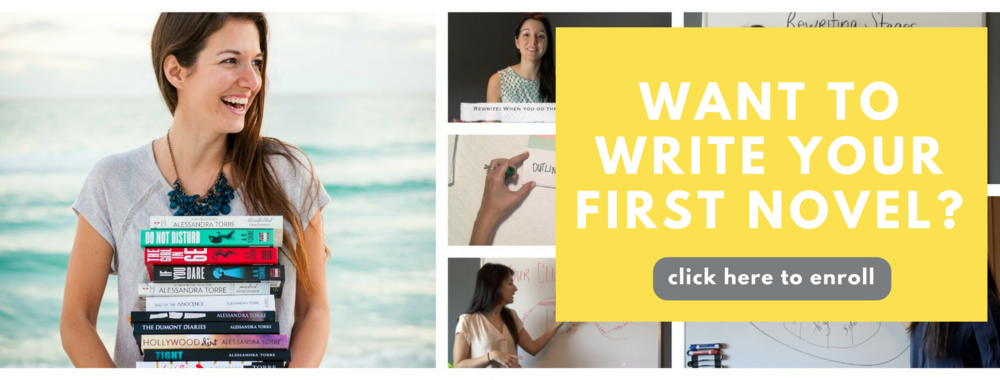Writing a Blurb with Mal Cooper
As I love to shout from every rooftop I can find - your book’s blurb is SO important when it comes to sales. After all, it’s your elevator pitch to readers, and the best way to sell readers on your plot, characters, and story.
Blurbs (the description on the sales page and on the back cover of your book) can be tricky, so I asked my good friend Malorie Cooper for help. She’s an expert in writing blurbs and ad copy, and is teaching a class at Inkers Con 2021 on those very topics! She urged me to share the idea of writing a blurb “to market”, and expanded on the topic in a guest blog post, which I’ve included below. Here’s what Malorie had to say….
I feel as though “Write to Market” has become a bit of an unwelcome phrase in writerly circles over the past few years. Too often the phrase carries the subtext: “don’t write what you want, write what sells”, and let’s face it, that feels stifling.
Despite that, I think that most authors do write to market. Another way to phrase the saying is: “know your genre”.
I’d bet that each of you reading this has taken care to understand what readers expect in the type of story you’re writing. If you’re telling a vampire story, you know to include… vampires. If you’re spinning an epic fantasy tale, there’d better be some swordplay.
Sure, both of those examples seem painfully obvious, but they illustrate the point that certain types of stories need certain tropes to fit into a given genre. If you miss key tropes and expectations, readers are not going to be happy. Imagine if you wrote a sweet romance without a happily ever after! People would be reaching for pitchforks in no time!
I know some of you are raising your hands right now, thinking of how you disrupted expectations and wandered off the beaten path, telling a tale with your own unique flair. Good! I’m glad you’ve stretched your wings—and if you did turn a trope on its head that sounds like a great story, just be cognizant of that when you market the book.
You see, if you put your sweet romance in the associated categories and market it to sweet romance readers, all with nary a hint of an ill-fated end in store for one of the star-crossed lovers, some less-than-favorable reviews will appear.
However, if you hint at that unusual outcome via your cover and blurb, you can ward off folks who won’t like your twist, while ensuring readers who are interested in a different telling will click that “Buy Now” button.
And that’s what a blurb is intended to do: filter out folks who won’t like your book, while drawing in those who will love it.
But what about writing it to market, then?
Well, even if you’re applying a different spin on your tale, you are certainly hitting some tropes and common reader expectations for a given genre. If you’re not, then there might be a different genre your book belongs in—which is the topic of another article altogether.
So what do tropes and genre expectations have to do with your blurb, you ask?
Well… pretty much everything.
Too often we authors get bogged down struggling through the process of writing a (roughly) 200-word description of our most recent novel, that our brains melt at the thought of that task, let alone also cramming in several important tropes. But what if I suggested you turn that formula on its head and instead start with the tropes?
Rather than outlining the plot of your story and then winnowing it down, why not instead jot down the top tropes in your story. Do you have a jilted lover? A walled-off hero? A villain desperate to raise the spirit of some long-lost love? Are there explosions?!
Write down the elements of your story that you think align well with the genres you’ve written for. Then take a look at your cover. Which of those elements are most strongly represented by the art you chose? The reason I ask about this is because, let’s say your cover depicts a woman seated on a horse-drawn wagon with storms in the distance, as her family makes their way west to a new home in America’s old west. Let’s also say that a small part of the book takes place in London before they leave on their new adventure. While you may want to mention that the family has left from London, that part of the tale doesn’t appear on the cover at all, and if you spend too much of the blurb discussing those events and backstory in London, it’ll create dissonance with the expectation the cover (and title, presumably) already set.
Instead, focus on the elements on the cover and the tropes surrounding the main obstacles, rising action, and climax. Once you have listed the key tropes and genre expectations your story include, think about them insofar as how they intersect with your main character(s). Focus on how your character encounters and deals with the items you’ve noted.
Then write your blurb like your protagonist’s entire future depends on them overcoming the obstacles you’ve created—because it does!
Discover more great tips and see examples of blurbs and ad copy in Mal’s 2021 Inkers Con presentation. This class is part of 24 presentations in the Inkers Con lineup. View full classes and details at inkerscon.com.
Malorie Cooper is a New York Times bestselling author of over 110 books, including "Help! My Facebook Ads Suck".
She loves marketing and interacting with fans almost as much as writing, and can often be found wearing a cosplay outfit while streaming her daily writing with other authors joining in.
You can learn more about Malorie on her website and Facebook. Mal will be holding a book launch masterclass in late July.







